H-TL-633
Haltec Valve Cap Remover For Dual Wheels - (8.25"L)
$21.15
1 reviewAME-51025
AME 51025 QVC Quick Valve Change Tool
$37.95
11 reviews44-413-EA
AA TR-413 Snap-In Tubeless Valve (.453" RH)
From $0.28
5 reviewsH-310
Haltec 310 Valve Adapter Gun, Core Ejector for Liquid Filled Tire
$105. 00
44-572-90
AA Pre-Bent TR-572 Clamp-In Tubeless Truck Valve (Ea)
From $2.50
LVT050
Rema Lock-on Valve Core Tool for Car/LT
From $18.98
ALI-V2B-10
Alligator V2B Gator Double Seal Tire Valve Caps
From $11.95
43-025
AA Valve Core Fuel Rail (Viton) (Box of 10)
$10.95
3 reviews43-122
AA Metal Truck Valve Extension (ea.)
From $7.98
44-543-EA
AA TR-543 Clamp-In Valve For Alcoa Wheel (0.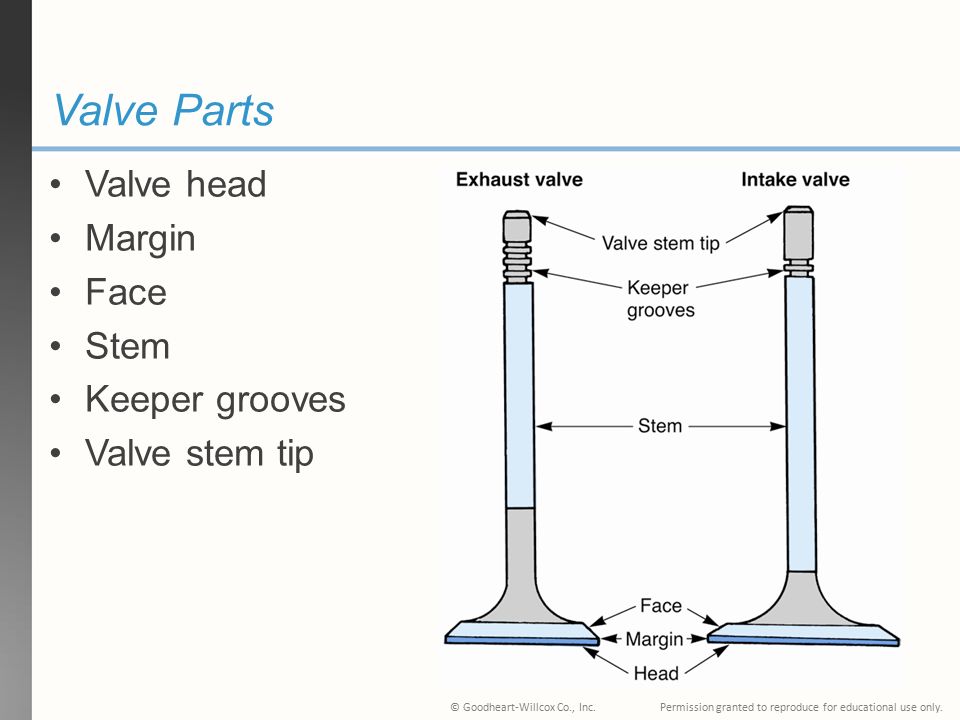 389" RH) (Ea)
389" RH) (Ea)
From $1.95
1 review43-303
AA 11" Extra-long Valve Core Remover (Ea)
$10.76
M-443
Milton Combination Valve Core Extractor + Installer + Inflator Tool
$19.25
2 reviewsH-P15
Haltec 5/8" Rubber Rim Hole Plug for Tube-Type Wheels (Ea.)
$3.76
2 reviews44-416MC
AA 2.25" Bent Brass Valve For Ford F-Series
From $3. 50
50
44-600-EA
AA TR-600HP High Pressure Snap-In Tire Valve (0.453"RH)
From $0.95
1 review43-098-10
AA Double Seal Valve Cap
From $9.95
1 review43-160
AA Slip-On Valve Stem Puller
$2.00
LN-10-P
AA Rim Nut for Air/Liquid Valves TR218A, TR220A (Ea)
From $0.95
1 review44-500-EA
AA TR500 Clamp-In Tubeless Truck Tire Valve (Ea. )
)
From $1.95
DIL-VS-3600
Dill VS-3600 Sprinter Dually Valve for Outer Rear Steel Wheel (Ea)
From $18.00
All Metal Valve Stems1147115ms115ms2713 Degree Bend13 Degrees13°13° Bend16 Degree Bend16 Degrees16°16° Bend23 Degree Bend23 Degrees23°23° Bend27 Degree Bend27 Degrees27°27° Bend3 Valve Stems & Hardware3.1 Metal Valve Stems3.1 Valve Stems3.12 Metal Passenger3.13 Metal Truck3.16 Tank31 Degree Bend31 Degrees31°31° Bend399400401416416L416mc41741MS41ms0043045 degree45 Degree Bend45 Degrees45°45° Bend47501OV509510511513515523MS542543544544D545545D545E546546D546E552554554D555D575575A575hp60 Degree Bend60 Degrees60086010602060306040605060ms60ms2760°60° Bend618618A621621A622622A623623A65 Degree Bend65 Degrees65°65° Bend70ms70ms2770ms775 Degree Bend75 Degrees75°75° Bend80ms80ms2790 degree90 Degree Bend90 Degrees90ms90ms2790°90° BendAir LiquidAir Liquid ValveAir Liquid Valve StemsAlcoaAlcoa Grommet Seal Valve StemAlcoa Grommet Valve StemsAlcoa O-Ring Seal Valve StemAlcoa O-Ring Valve StemsAluminumAluminum Truck Valve StemAluminum Wheel Tubeless Valve StemsBend_13°Bend_16°Bend_23°Bend_27°Bend_31°Bend_45°Bend_60°Bend_65°Bend_75°Bend_90°Bend_Double BendBend_StraightBrass Tubeless Clamp-In ValvesChromecircularClamp-In Valve StemDouble BendDouble Bent Valve StemDouble Bent Valve Stemsds1duallydually valve stemdually valve stemsdully valve stemdully valve stemsEinkyenkeiEnkei Valve StemsFlush Mount Valve StemsFor_PassengerFor_TankFor_TruckFordFord F Series Valve StemFord F Series Valve StemsH-47H-501OVH-523MSHigh Pressure Chrome Valve StemsisuzuizuzuLight Alloy Valve StemsLow Profile Chrome Valve StemLow Profile Chrome Valve StemsMetal Tubeless Clamp-In ValvesmetricMetric Rim Hole Valve StemMetric Rim Hole Valve StemsMotorcycle ValvesN-1147N-1600N1147N1600oblongovalOval Rim Hole Valve StemsPassengerrim holeSpecial Clamp-In ValvesStraightStraight - No BendTankTank ValveTank ValvesTR416TR416DS1TR416LTR416MCTR417TR430TR500TR501TR501-OVTR509TR510TR511TR513TR515TR542TR543TR543CTR543DTR543ETR544TR544DTR545TR545DTR545ETR546TR546DTR546ETR552TR554DTR555TR555DTR570TR575TR575ATR575HP-DS1TR618TR618ATR621TR621ATR622TR622ATR623TR623Atractor valveTruckTubelessTubeless Truck Valve StemTV-399TV-400TV-401TV-416TV-416-DS1TV-416LTV-416MCTV-430TV-500ATV-501ATV-509TV-510TV-511TV-513TV-515TV-542TV-543TV-543CTV-543DTV-543ETV-544TV-544DTV-545TV-545DTV-545ETV-546TV-546DTV-546ETV-552TV-554DTV-555DTV-570ATV-571ATV-572-13TV-572-F19TV-572ATV-573ATV-574ATV-575-HPTV-575-HP-DS1TV-575ATV-6008CTV-6010TV-6020TV-6030TV-6040TV-6050TV-621ATV-622ATV-623ATV-714TV-CPVtv416TV416LTV430tv500tv501tv509tv510tv511tv513tv515tv543tv543ctv543dtv543etv544tv544dtv545tv545dtv545etv546tv546dtv546eTV552tv554tv554dtv555tv555dtv570tv571tv572atv573TV575TV575HPtv60008TV6010TV6020TV6030TV6040TV6050TVCPVType_Air Liquid ValveType_Alcoa Grommet Seal Valve StemType_Alcoa O-Ring Seal Valve StemType_Aluminum Truck Valve StemType_Clamp-In Valve StemType_Double Bent Valve StemType_Ford F Series Valve StemType_Low Profile Chrome Valve StemType_Metric Rim Hole Valve StemType_Tubeless Truck Valve StemV3-20-1valve stemVH515-4
FeaturedBest SellingAlphabetically: A-ZAlphabetically: Z-APrice: Low to HighPrice: High to LowDate: New to OldDate: Old to New

The trailer brake actuator can be two-wire and single-wire depending on the number of circuits designed to supply the pneumatic actuator with air and control the trailer's braking processes. Therefore, valves for two-wire or single-wire actuators of different designs can be used to connect to the pneumatic drive of trailers.
Modern trailer vehicles are more often equipped with two-wire drives that have two lines and provide reliable control of the trailer brakes. However, the single-wire drive is also widely used in the braking systems of trailers and semi-trailers due to its simplicity and the ability to automatically brake the trailer in case of separation from the tractor.
For these reasons, tractor vehicles are usually equipped with both types of control valves, as well as the corresponding coupler heads, which allow them to be connected to a trailer with any air drive configuration.
The main role in the control of the trailer brakes is played by the combined air distributor.
***
Combination trailer air distributor allows the trailer to be used with towing vehicles with single or double wire trailer drive.
The supply line is connected to terminal II . The control line is connected to terminal III . Conclusion IV is connected to the brake chambers, and terminal I is connected to the trailer reservoir.
When the brake pedal is released, compressed air is supplied through the supply line to the outlet II and through the cavity B under the piston 8 .
Further, bending around the edges of the cuff of the piston 8, the air enters the cavity A and through the channel 6 and output I into the trailer receiver. The brake chambers are connected to the environment through port IV , open inlet valve and port V .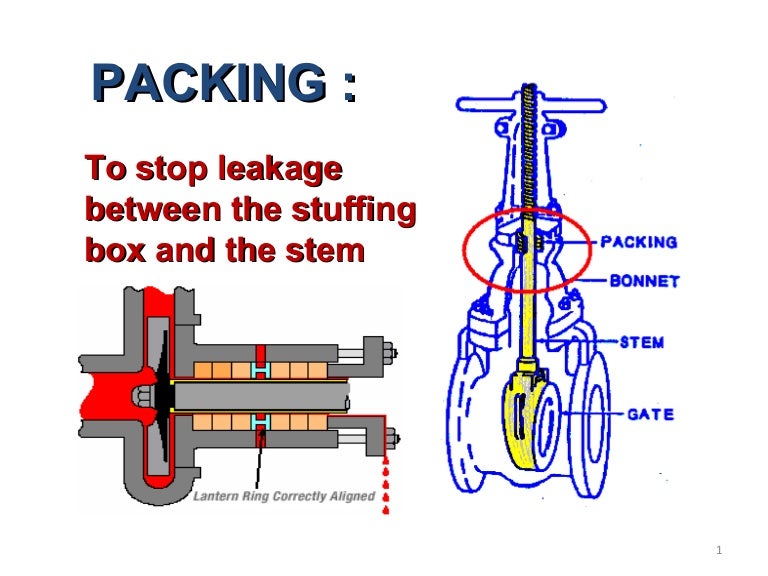
When braking, compressed air is supplied through the control line to terminal III and, having passed through the channel into the cavity above the piston 5 , lowers it down. The outlet valve 16 closes, and the inlet valve 3 opens, and compressed air from the receiver through the outlets I and IV through the channel a and the open valve 3 flows to the brake chambers.
The flow of air will occur until the pressure acting on the piston 9 is balanced0020 5 bottom and top. Then both valves 3 and 16 will close. Thus, a follow-up action is carried out.
If the trailer is separated from the tractor, the compressed air from the connecting supply line escapes into the environment, and the pressure in outlet II and in cavity B drops sharply.
This causes the piston 8 to lower due to the pressure in the chamber A and the inlet valve 3 9 to open.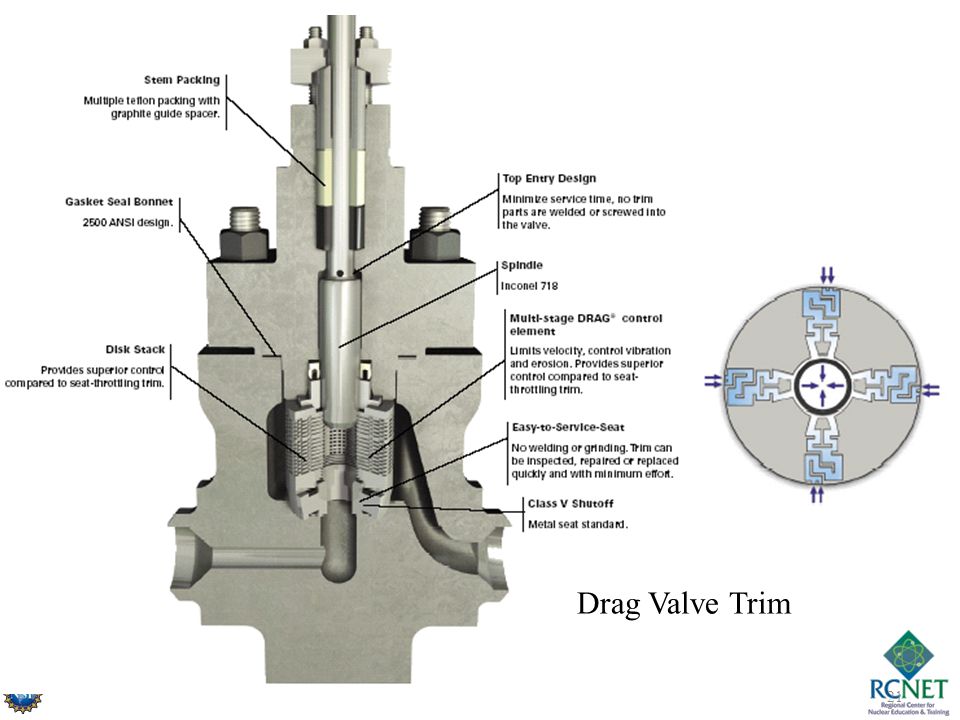 0021, through which air from the receiver begins to flow into the brake chambers, carrying out emergency braking of the trailer.
0021, through which air from the receiver begins to flow into the brake chambers, carrying out emergency braking of the trailer.
To brake the trailer, pull out the stem 14 of the brake release valve by the handle. The air from the brake chambers will be released into the environment, and the trailer will be braked. The trailer is braked by returning the brake release valve handle to its original position.
When connecting a trailer to a tractor with a single-wire trailer brake drive, only one output 9 is activated in the air distributor0020 II . The filling of the receiver in this case occurs in the same way as in a two-wire drive. Braking occurs as a result of releasing air from the connecting line through the brake valve of the tractor vehicle. This leads to a decrease in pressure in the cavity B and under the piston 8 , as a result of which it lowers, closing the exhaust valve 16 and opening the inlet valve 3 .
Compressed air from the receiver through terminals I and IV begins to flow to the brake chambers, causing the trailer to brake.
***
2-way actuator includes a 2-way trailer brake control valve ( fig. "Palm".
The control valve is used to control the brake mechanisms of the trailer under the action of three independent circuits simultaneously or separately: the drive of the brake mechanisms of the service brake system of the front wheels, the drive of the brake mechanisms of the service brake system of the wheels of the rear bogie, as well as the drive of the brake mechanisms of the parking and spare brake systems.
During the operation of the first two circuits, a direct action signal is supplied to the valve (i.e., increased air pressure), while the third circuit is operating, a reverse action signal is supplied (i.e., reduced pressure when air is released by the parking and emergency brake control valve).
In all cases, the control valve directs compressed air from the reservoir into the brake chambers of the trailer wheels during braking and releases air from them into the environment when the brakes are released.
The control valve consists of three parts. In the upper section of the valve, a two-section piston with a spring, a follower piston with a spring and an adjusting screw are placed. The bottom of the piston forms the exhaust valve. In the middle section there is a piston with a spring, an inlet valve with a relief hole inside and a stem fixed in the membrane.
In the disengaged state, air is not supplied to the terminals of the upper and lower sections from the two-section brake valve. Compressed air is supplied to the output of the control valve for the brake mechanisms of the parking brake system, which acts on the membrane from above. At the same time, compressed air enters from the bottom of the piston through the outlet from the receiver. Due to the fact that the area of the diaphragm is greater than the area of the piston, the diaphragm together with the rod is in the lower position.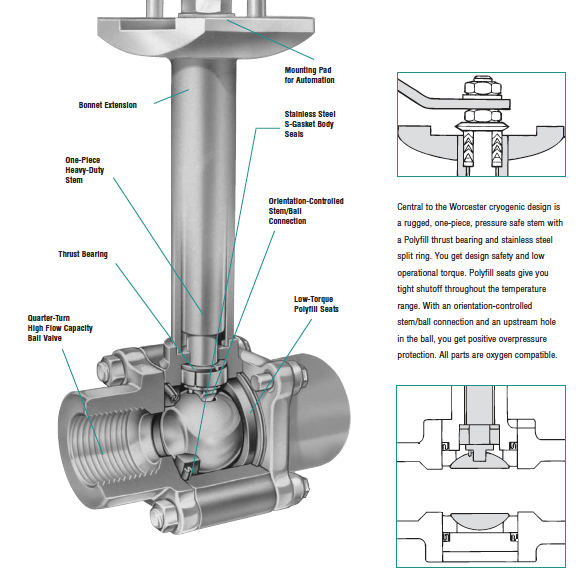
The two-section and follower pistons are in the upper position under the action of the spring. The exhaust valve moves away from the intake valve, which, under the action of its spring, remains closed.
The cavity above the piston, and, consequently, the outlet to the trailer brake line and the trailer brake control line, through the opened relief hole, is connected to the outlet to the environment.
In the case of braking by a service brake system (two circuits), compressed air from the lower and upper sections of the two-section brake valve is supplied to the corresponding outlets on the control valve. The exhaust valve is pressed against the intake valve and, closing its internal opening, disconnects the output of the trailer brake line from the environment, and during further movement, overcoming the resistance of the spring, it separates the intake valve from the piston.
Compressed air from the reservoir enters through the opened inlet valve into the brake line and then into the trailer brake control line.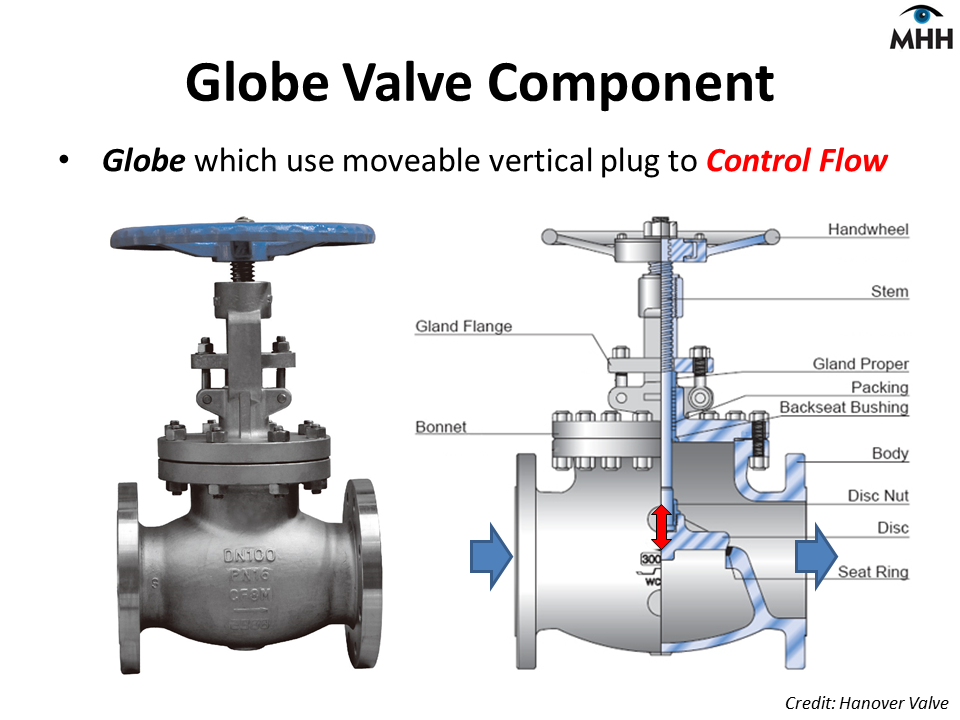 Compressed air will flow until equilibrium is reached: in the upper section - between the air pressure on the follower piston from below and the air pressure and the balancing spring on the same piston from above; in the middle and lower sections - between the pressure of compressed air on the piston from above and the air pressure acting on the membrane from below. Thus, a follow-up action is carried out.
Compressed air will flow until equilibrium is reached: in the upper section - between the air pressure on the follower piston from below and the air pressure and the balancing spring on the same piston from above; in the middle and lower sections - between the pressure of compressed air on the piston from above and the air pressure acting on the membrane from below. Thus, a follow-up action is carried out.
During the operation of a two-section brake valve, in the event of release of the brakes, compressed air from the outlets of the upper and lower sections of the brake valve is released into the environment. The rod with the piston takes the lower position under the action of compressed air in the cavity above the membrane.
The two-section piston and the follower piston, under the action of a conical spring and compressed air, occupy the upper position. The exhaust valve moves away from the inlet valve, and the output to the trailer brake line through the unloading hole communicates with the environment.
If compressed air is supplied separately to the outlet from the lower section of the two-section brake valve, then the rod with the piston moves upwards. In this case, the inlet valve first approaches the outlet valve and the discharge opening is closed. The trailer brake line is disconnected from the environment, the inlet valve opens and compressed air enters the trailer brake line.
When compressed air is supplied from the upper section of the brake valve, the two-section and follower pistons will begin to move down, causing a similar interaction between the intake and exhaust valves.
In the event of braking using the parking or emergency brake systems of the vehicle, compressed air from the outlet is released into the environment under the action of a signal from the manual control valve for the parking and emergency brake systems. The air pressure above the membrane drops, and under the action of compressed air, constantly supplied from the output to the receiver and acting on the piston from below, the piston with the rod rises.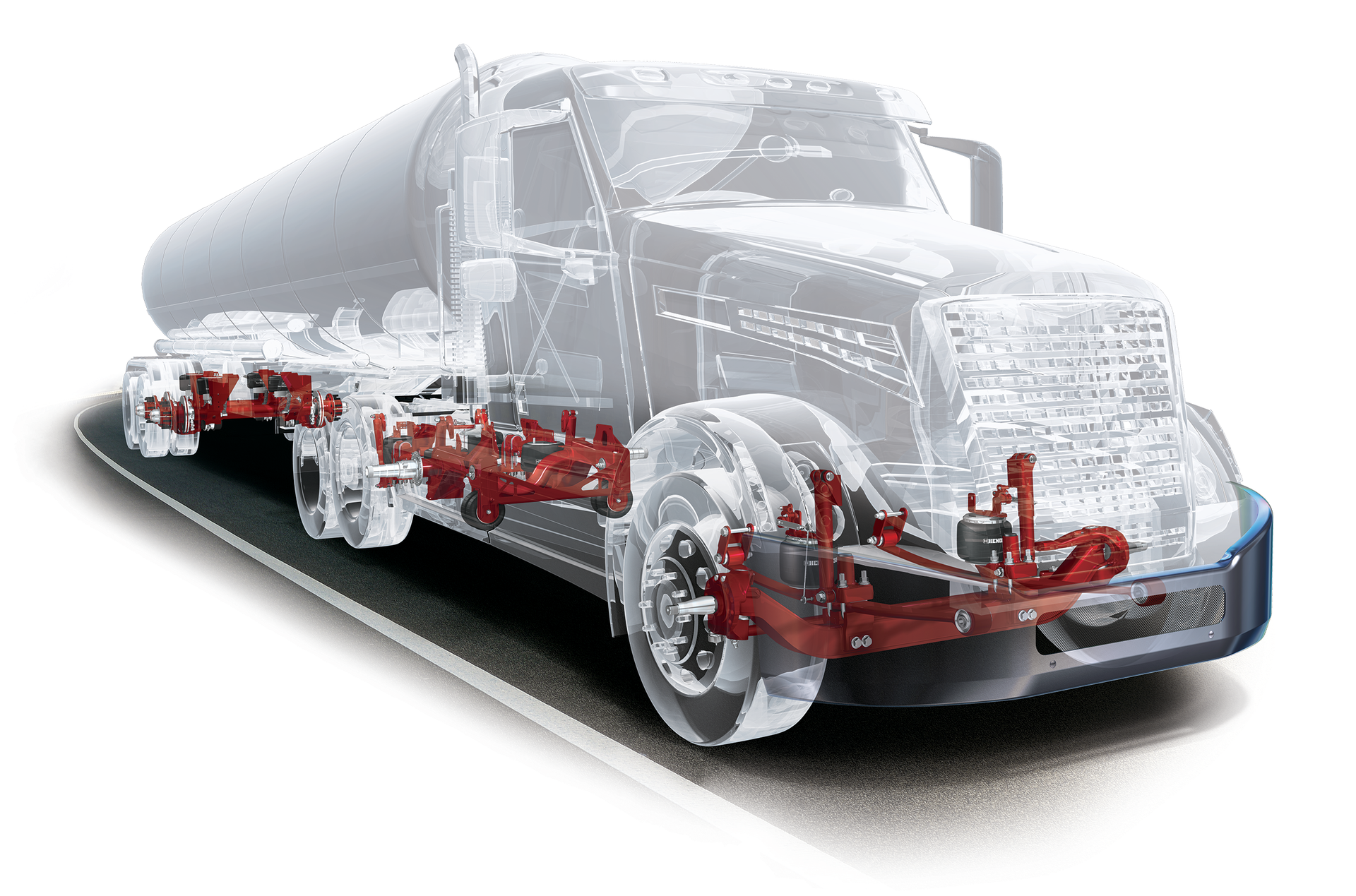 At the same time, the inlet valve closes the discharge opening, pressing against the outlet valve, and the outlet to the brake line of the trailer is disconnected from the environment.
At the same time, the inlet valve closes the discharge opening, pressing against the outlet valve, and the outlet to the brake line of the trailer is disconnected from the environment.
Then the inlet valve breaks away from the piston, and the compressed air through the outlet to the receiver enters the outlet of the trailer brake line. The pressure in the trailer line increases until there is an equilibrium between the forces acting on the piston from below and from above.
Single line actuator includes trailer brake control valve, release valve and coupling head type " A ".
The trailer brake control valve with a single-line actuator provides one connecting line that serves both to supply the trailer line with compressed air and to control the braking process.
The connecting line goes to the air distributor of the trailer's pneumatic drive, which, when the pressure in the connecting line increases, directs air to the trailer's reservoir, and under reduced pressure, supplies compressed air from the trailer's reservoir to the brake chambers of the wheels with an intensity depending on the pressure drop in the trailer's brake control valve with a single-wire drive (when the pressure drops to atmospheric, the trailer is completely braked).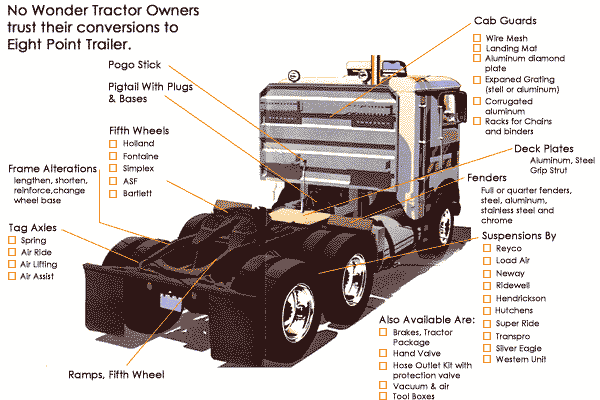
***
Single line trailer brake control valve ( fig. 2 ) connects the tractor's pneumatic drive to the trailer's pneumatic drive via a single line that supplies the trailer's pneumatic drive with compressed air and controls braking processes.
The connection of the pneumatic drive of the tractor with the drive of the trailer in this case is carried out by a connecting head of the type " A ".
In the released state, compressed air is supplied to the output from the reservoir of the parking brake circuit. Under the action of the upper spring, the rod with the membrane is in the lower position, while the inlet valve is open, the outlet valve is closed, compressed air from the receiver through the open inlet outlet valve enters the connecting line of the trailer.
At the same time, through the channels, compressed air enters the over-piston and under-piston cavity of the stepped piston, respectively, acting on it.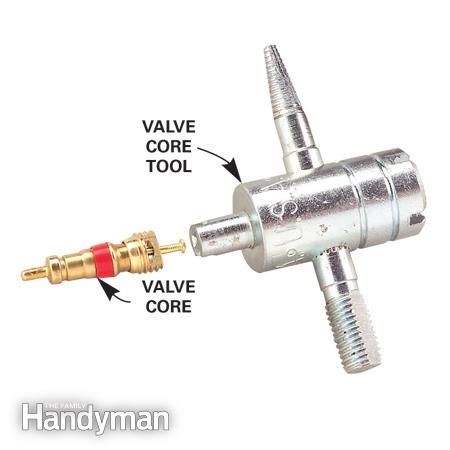 But since the bottom area of the piston is larger, it rises to the top position, sliding along the rod.
But since the bottom area of the piston is larger, it rises to the top position, sliding along the rod.
When the pressure in the trailer line reaches 0.52 MPa , the lower piston, overcoming the resistance of the lower spring, will go down, closing the inlet valve. If the pressure in the trailer line decreases, then the lower piston will rise under the action of its spring and reopen the intake valve.
Thus, in the disengaged state, the required pressure is automatically maintained in the trailer line.
When the vehicle is braked, compressed air from the two-section brake valve is supplied first to the trailer brake control valve with a two-wire actuator, and from it to the outlet of the trailer brake control valve with a single-wire actuator.
Compressed air, getting into the cavity under the membrane, acts on it from below, forcing the membrane to rise along with the stem. In this case, the inlet valve closes and the outlet valve opens, communicating with the environment.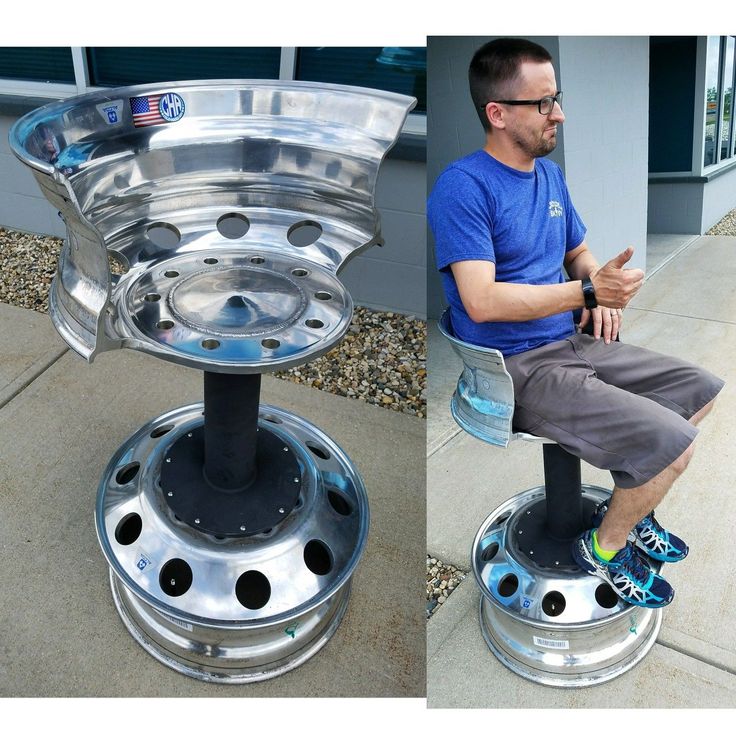
The pressure in the connecting line drops, the air distributor in the trailer drive directs compressed air from the trailer's reservoir to its brake chambers.
Follower action by stepped piston. When the pressure in the connecting line decreases, it falls in the cavity above the piston, and in the cavity under the piston the pressure will remain the same as in the outlet to the receiver. In addition, the piston perceives the pressure of the air located in the cavity under the membrane.
Due to the pressure difference from above and below, the stepped piston begins to move downward, and, resting against the thrust ring, moves down the rod, which closes the exhaust valve window.
When the pressure in the outlet to the trailer brake control valve with a two-wire drive increases (for example, when the trailer is separated from the tractor), the stem is in the extreme position at which the outlet port will be fully open and the inlet port closed, which will lead to full braking of the trailer .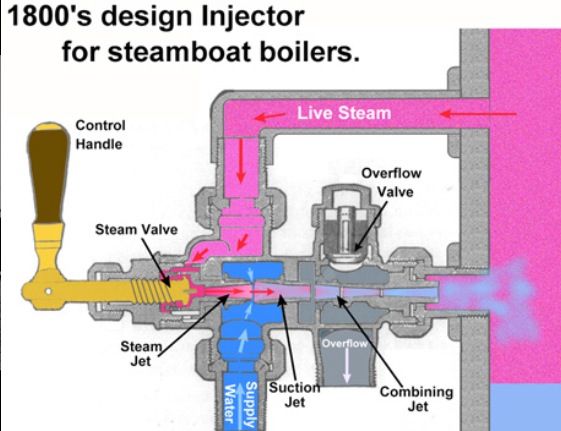
***
Disconnect valve ( fig. 3, a ) is used to shut off the highway connecting the tractor with a trailer or semi-trailer. When the valve handle is positioned along its body, the pusher presses on the stem with the membrane, which, overcoming the resistance of the valve spring, lowers the valve.
When the valve handle is turned across the body, the pusher rises, the stem moves away from the valve under the action of the return spring, and it closes under the action of its spring.
***
To connect the pneumatic system of a towing vehicle to the pneumatic drive of a trailer or semi-trailer, two "Palm" type sockets are usually installed in the two-wire drive line, and one " A " type head in the single-wire drive line, which is connected to the trailer head type " B ".
Palm-type heads ( fig. 4 ) valveless with rubber seals to seal the joint, as well as with locks that hold the heads of the tractor and trailer in the coupled state.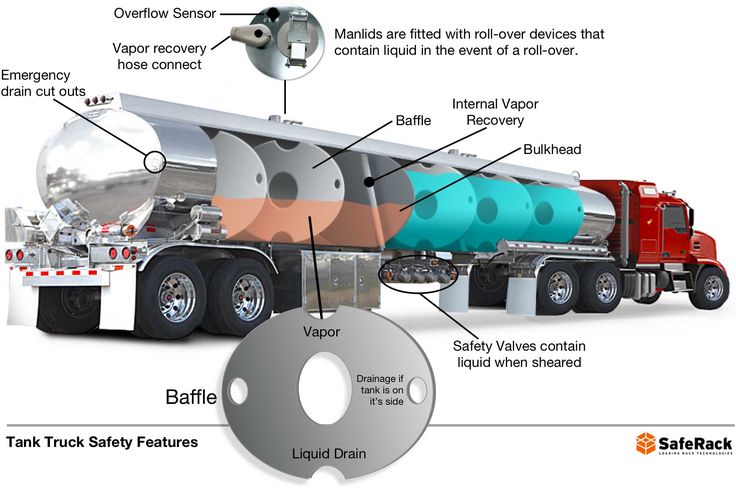
Type “A” sockets ( fig. 5 ) have a spring-loaded non-return valve. When connecting heads type " A " and " B " under the action of the pin of the head type " B " the check valve opens. Heads of the same type on the tractor and trailer are usually painted the same color.
To protect the brake system of a trailer or semi-trailer from dust and dirt, main filters are installed at the inlet to the pneumatic drive of the trailer.
***
Pneumatic actuator safety devices
 01.01. "Car device"
01.01. "Car device" 05/17/2017 #Air distributor for trailer brakes # Air distributor
Trailer/semi-trailer brake air distributor: comfort and safety of the road train Trailers and semi-trailers are equipped with an air brake system that works in concert with the tractor brakes.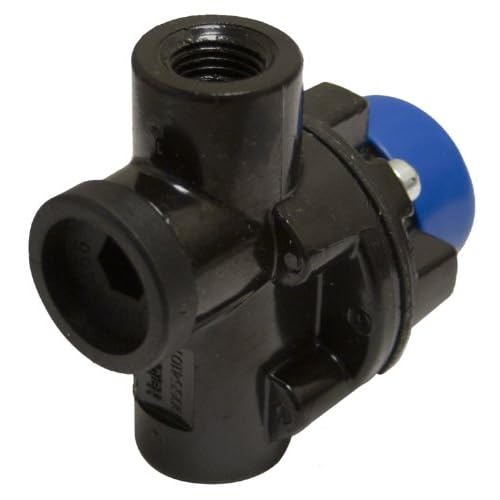 The coherence of the functioning of the systems is ensured by the air distributor installed on the trailer / semi-trailer. Read everything about this node, its types, design and operation in the article.
The coherence of the functioning of the systems is ensured by the air distributor installed on the trailer / semi-trailer. Read everything about this node, its types, design and operation in the article.
Trailer/semi-trailer air distributor (air valve) is a control and control component of the brake system of trailers and semi-trailers with pneumatic drive. A unit with a system of channels and valves that ensures the distribution of compressed air flows between the components of the system.
Air distributor designed to control a road train and a separate trailer/semi-trailer:
• Braking and braking of a trailer/semi-trailer as part of a road train;
• Trailer/semi-trailer braking when disconnected from the vehicle;
• Releasing the trailer/semi-trailer, if necessary, maneuvers without attaching to the tractor;
• Emergency braking of a trailer/semi-trailer when separated from a road train.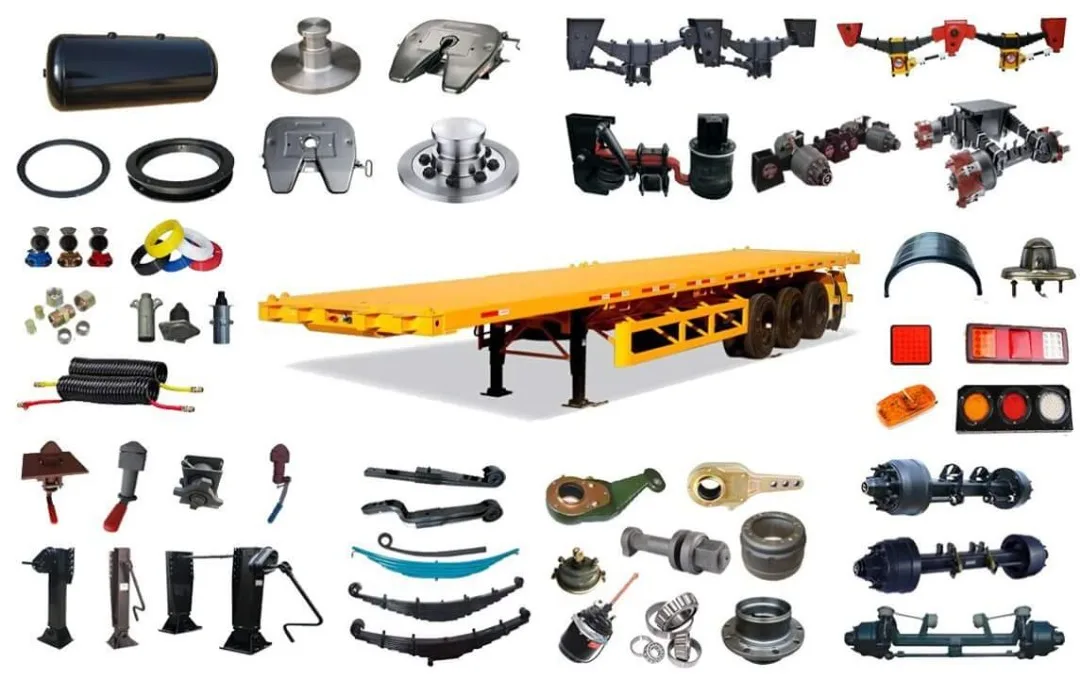
All cargo trailers and semi-trailers are equipped with brake air distributors, but they differ in purpose, type and design, which should be discussed in more detail.
Air distributors are divided into groups according to the type of pneumatic drive of the brake system in which they can work, and the configuration.
There are three types of air diffusers:
• For single wire brake systems;
• For two-wire brake systems;
• Universal.
Trailer and semi-trailer single-wire brakes are connected to the car's pneumatic system with one hose. With its help, both the filling of the receivers of the trailer / semi-trailer and the control of its brakes are carried out. Two-wire brake systems are connected to the tractor's pneumatic system by two lines - the supply line, through which the trailer's reservoirs are filled, and the control line.
To work in a single-line brake system, air distributors with a follower mechanism are used, which monitor the pressure in the line and, depending on it, supply compressed air from the trailer's reservoir to its brake chambers.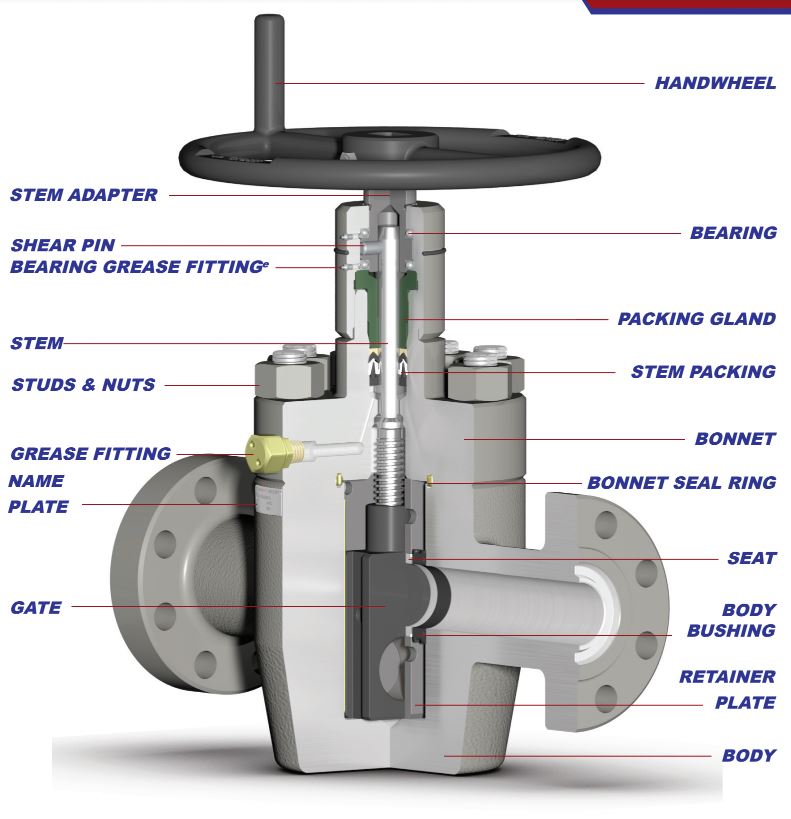
For two-wire operation, air distributors with a separate follower are used, which monitor the pressure in the control line, and, depending on it, controls the air supply from the receivers to the components of the trailer/semi-trailer brake system. Universal air distributors can work in both one- and two-wire brake system.
There are two types of air diffusers according to the configuration:
• Without additional equipment;
• With built-in brake release valve (KR).
In the first case, the air distributor includes only components that ensure automatic distribution of compressed air throughout the system depending on the pressure in the tractor's pneumatic system (or in the control line). To release and brake a trailer/semi-trailer disconnected from the road train, a separate manual release valve is used, which can be installed next to the air distributor or on its body. In the second case, the air distributor has a built-in release valve.
Universal air distributor device
Today, a large number of models of trailer and semi-trailer air distributor valves are produced, but they all have a fundamentally the same device. The unit combines several pistons and valves that switch the line from the tractor, the receiver and the wheel brake chambers, depending on the state of the brake system of the tractor. Let us consider the design and principle of operation of a universal (used in both single- and 2-wire brake systems) air distributor of KAMAZ trailers with a separate release valve.
The unit combines several pistons and valves that switch the line from the tractor, the receiver and the wheel brake chambers, depending on the state of the brake system of the tractor. Let us consider the design and principle of operation of a universal (used in both single- and 2-wire brake systems) air distributor of KAMAZ trailers with a separate release valve.
We note right away that the air distributor controls the brake system of the trailer only when using the main brake system of the tractor. If the tractor is using a spare or parking brake system, the air supply to the trailer brake components is controlled by a solenoid valve. We will not consider the operation of this node here.
Diagram of a single-wire pneumatic system
The line from the pneumatic system of the tractor is connected to the branch pipe I; branch pipe II remains free and connects the system with the atmosphere; branch pipe III is connected to the brake chambers; output IV - with a trailer receiver. With this connection, branch pipe V remains free.
With this connection, branch pipe V remains free.
Trailer to tractor connection. Road train movement. In this mode, compressed air from the vehicle main through pipe I enters the piston chamber 2, passes through the cuff skirt 1 and freely penetrates into the over-piston chamber, through the channel enters the pipe IV and from it to the receivers. Exhaust valve 5 remains open, so the brake chambers communicate with the atmosphere through pipe III, valve 5, its sleeve 6 and pipe II. Thus, while driving as part of a road train, the trailer / semi-trailer tanks are filled, and the brakes do not work.
Road train braking. At the moment of braking the tractor, the pressure in the line and on the branch pipe I decreases. At some point, the pressure from the side of pipe IV (from the receivers of the trailer / semi-trailer) exceeds the pressure from the side of pipe I, the edges of the cuff are pressed against the cavity body and the piston, overcoming the elasticity of spring 9, moves down.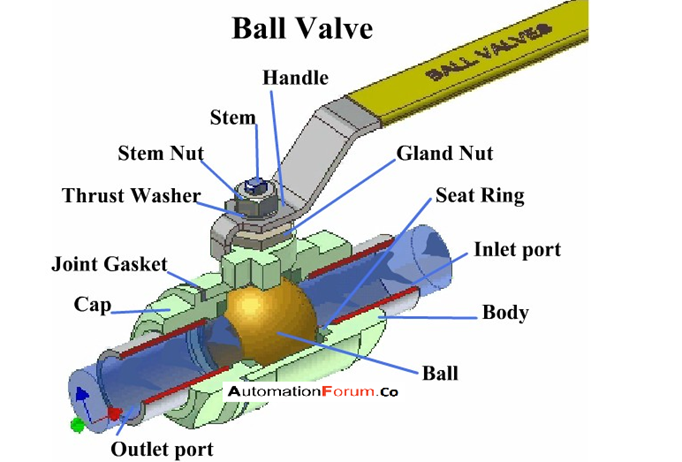 Together with the piston 2, the stem 3 and the lower piston 4 associated with it move, the latter with the valve seat 5 adjoins the end of the sleeve 6, it also moves down and opens the inlet valve 7. As a result, compressed air from the trailer / semi-trailer receivers through the pipe IV enters the pipe III and to the brake chambers - the wheel brakes are activated and braking occurs.
Together with the piston 2, the stem 3 and the lower piston 4 associated with it move, the latter with the valve seat 5 adjoins the end of the sleeve 6, it also moves down and opens the inlet valve 7. As a result, compressed air from the trailer / semi-trailer receivers through the pipe IV enters the pipe III and to the brake chambers - the wheel brakes are activated and braking occurs.
Releasing the road train. When the tractor is released, the pressure on pipe I increases, as a result, pipe I is reconnected to pipe IV (trailer tanks are filled), and the brake chambers bleed air through pipes III and II - braking occurs.
Hose break emergency braking, trailer/semi-trailer decoupling from road train. In both cases, the pressure at terminal II drops to atmospheric pressure and the air distributor operates as in normal braking.
Scheme of a two-wire pneumatic system
Two lines from the tractor are connected to the air distributor - supply to branch pipe I and control pipe to branch pipe V. The remaining pipes have a connection similar to a single-wire circuit. Also, with a 2-wire pneumatic drive circuit, equalizing valve 10 comes into operation. With this connection scheme, a higher pressure is applied to pipe I than with a single-wire circuit, which makes it difficult for piston 2 to move and disrupts the operation of the entire brake system. This problem is eliminated by a balancing valve - at high pressure it opens and connects the cavities above and below the piston, equalizing the pressure in them.
The remaining pipes have a connection similar to a single-wire circuit. Also, with a 2-wire pneumatic drive circuit, equalizing valve 10 comes into operation. With this connection scheme, a higher pressure is applied to pipe I than with a single-wire circuit, which makes it difficult for piston 2 to move and disrupts the operation of the entire brake system. This problem is eliminated by a balancing valve - at high pressure it opens and connects the cavities above and below the piston, equalizing the pressure in them.
Trailer/semi-trailer to tractor connection. Train movement. In this case, the air from the supply hose through the nozzles I and IV fills the receivers, the other components of the air distributor do not work.
Road train braking. When the tractor brakes, the pressure on the pipe V increases, compressed air enters the chamber above the piston 11, forcing it to move down. In this case, the processes described above occur - valve 5 closes, valve 7 opens, pipes IV and III are connected, and air from the receivers enters the brake chambers, braking.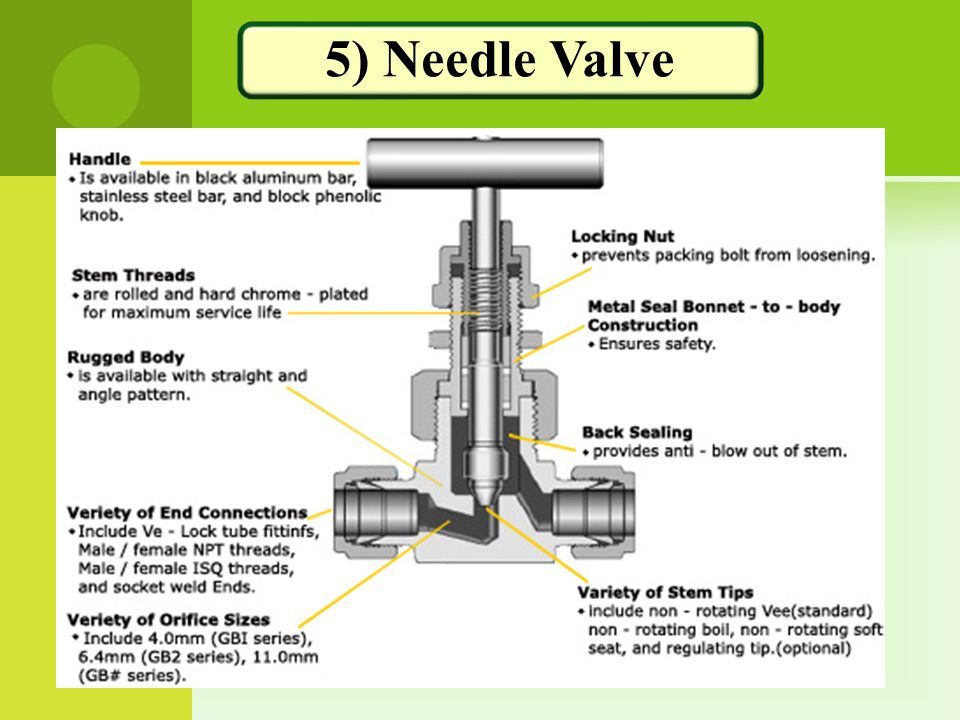
Releasing the road train. When the tractor is released, all processes occur in the reverse order: the pressure on the pipe V drops, the piston rises, pipe III connects to pipe II, air is bled from the brake chambers and the trailer is released.
Emergency braking in the event of a line break, trailer disconnection. In these cases, the balancing valve acts as a follower. When the pressure on pipe II drops to atmospheric pressure, the valve closes, separating the chambers above and below piston 2. As a result, the pressure above the piston (due to the air coming from the receivers through pipe IV) increases, and processes similar to braking occur with a single-wire connection. Thus, in the event of a rupture / disconnection of the hose or when the road train is disbanded, the trailer / semi-trailer is automatically braked.
Release valve device
KR has a simple structure and operation.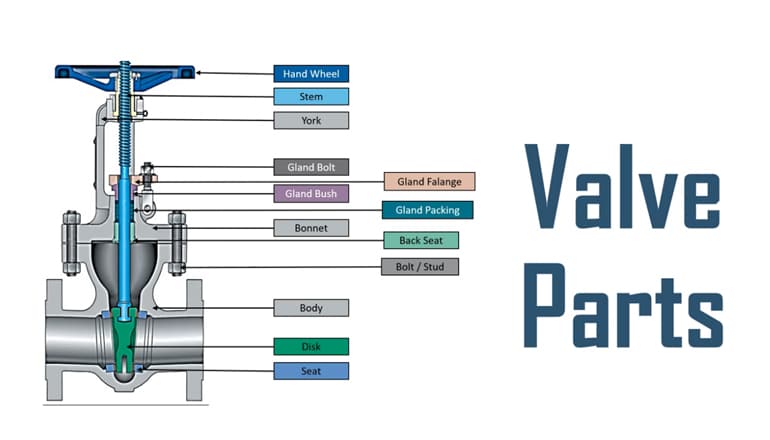 Let's consider the functioning of this node using the example of a trailer crane of the Kama Automobile Plant.
Let's consider the functioning of this node using the example of a trailer crane of the Kama Automobile Plant.
The unit can be mounted directly on the diffuser housing or placed side by side in a more convenient location. Its branch pipe I is connected to the trailer/semi-trailer receiver through the air distributor channel or a separate pipeline. Branch pipe II is connected to pair I of the air distributor, and branch pipe III is connected to the vehicle's mains.
During the main operation of the trailer, rod 1 is in the upper position (it is fixed in this position by means of spring-loaded balls that abut against recesses in the device body), air from pipe III flows to pipe II, and output I remains closed, so the valve does not affects the operation of the air diffuser.
If it is necessary to move the uncoupled trailer, you need to move the rod 1 down using the handle - this will lead to the separation of pipes II and III and the connection of pipes II and I. As a result, the air from the receiver is directed to the inlet I of the air distributor, the pressure on it increases and processes occur , similar to the braking processes with a single-wire pneumatic drive circuit - the trailer is released. For braking, it is necessary to return the stem to the upper position.
As a result, the air from the receiver is directed to the inlet I of the air distributor, the pressure on it increases and processes occur , similar to the braking processes with a single-wire pneumatic drive circuit - the trailer is released. For braking, it is necessary to return the stem to the upper position.
The brake air distributor is constantly subjected to high loads, gaps increase in its moving parts, which can cause air leaks, poor performance or, conversely, spontaneous operation of the brakes. For any problems, it makes sense to replace the assembly assembly.
When choosing an air distributor, follow the recommendations of the trailer manufacturer, and install units of specific models and part numbers. However, today the market offers a wide range of original air diffusers and their analogues with improved characteristics. Therefore, in some cases, it is justified to install an analogue, but in order to avoid problems in the future, it is necessary to choose analogues with suitable connecting dimensions and characteristics.
With the right choice and installation of the air distributor trailer or semi-trailer brakes will work reliably and efficiently in all conditions, ensuring the safety of the road train.
#Generator bar
Generator bar: fixing and adjusting the car's generator
14.09.2022 | Articles about spare parts
In cars, tractors, buses and other equipment, electric generators are mounted to the engine by means of a bracket and a tensioning bar that provides belt tension adjustment. About the generator strips, their existing types and designs, as well as the selection and replacement of these parts - read the article.
#Compressor adapter
Compressor adapter: reliable pneumatic connections
08/31/2022 | Spare Parts Articles
Even a simple pneumatic system contains a few connecting parts - fittings, or adapters for the compressor. About what an adapter for a compressor is, what types it is, why it is necessary and how it works, as well as the correct selection of fittings for a particular system - read the article.